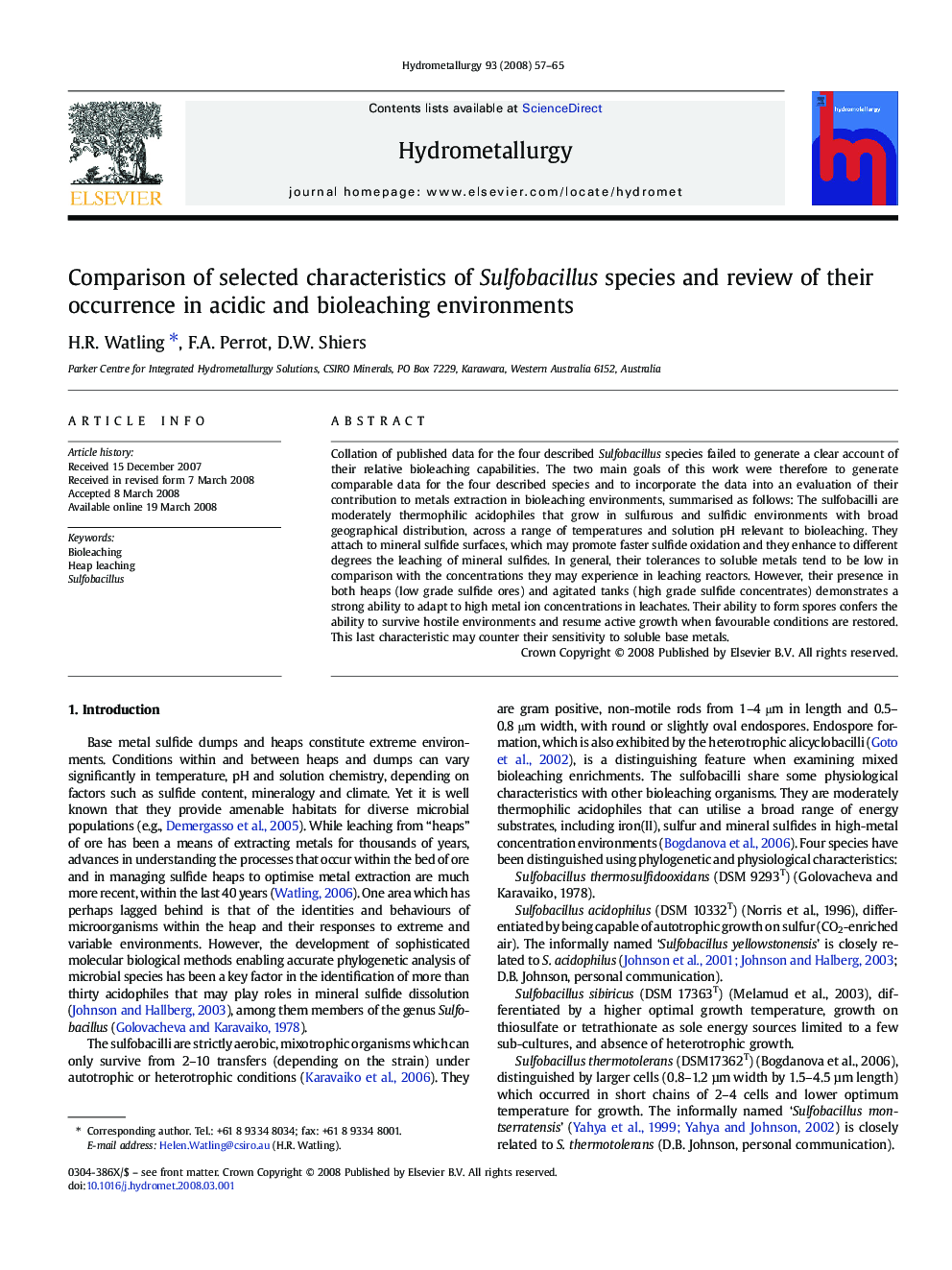| Article ID | Journal | Published Year | Pages | File Type |
|---|---|---|---|---|
| 213188 | Hydrometallurgy | 2008 | 9 Pages |
Collation of published data for the four described Sulfobacillus species failed to generate a clear account of their relative bioleaching capabilities. The two main goals of this work were therefore to generate comparable data for the four described species and to incorporate the data into an evaluation of their contribution to metals extraction in bioleaching environments, summarised as follows: The sulfobacilli are moderately thermophilic acidophiles that grow in sulfurous and sulfidic environments with broad geographical distribution, across a range of temperatures and solution pH relevant to bioleaching. They attach to mineral sulfide surfaces, which may promote faster sulfide oxidation and they enhance to different degrees the leaching of mineral sulfides. In general, their tolerances to soluble metals tend to be low in comparison with the concentrations they may experience in leaching reactors. However, their presence in both heaps (low grade sulfide ores) and agitated tanks (high grade sulfide concentrates) demonstrates a strong ability to adapt to high metal ion concentrations in leachates. Their ability to form spores confers the ability to survive hostile environments and resume active growth when favourable conditions are restored. This last characteristic may counter their sensitivity to soluble base metals.
